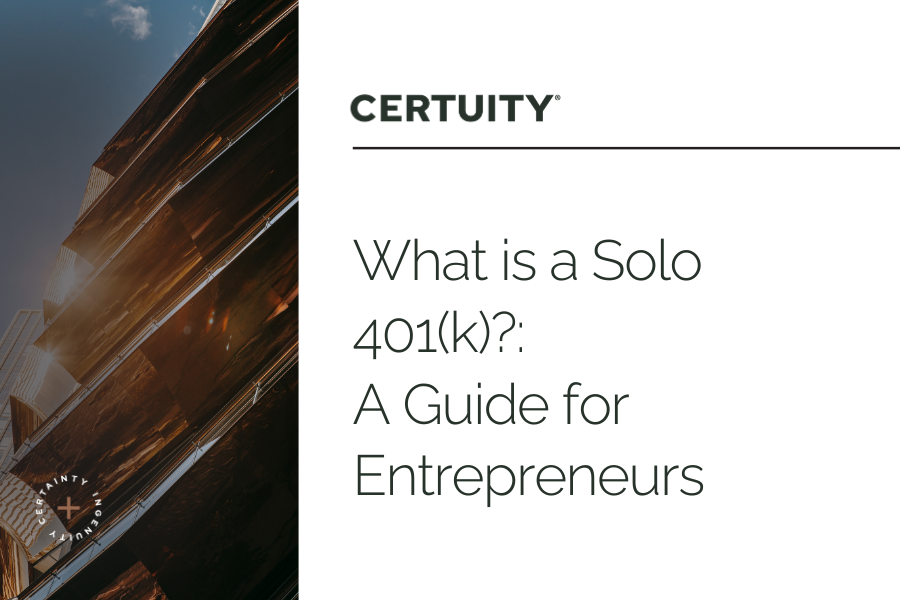
A Solo 401(k), also known as a Self-Employed 401(k) or Individual 401(k), is a retirement savings plan specifically designed for self-employed individuals or small business owners without full-time employees other than themselves and their spouses. This plan offers significant tax advantages, high contribution limits, and flexible investment options, making it an attractive choice for entrepreneurs seeking to secure their financial future.
What Exactly Is a Solo 401(k)?
The Solo 401(k) mimics the features of traditional employer-sponsored 401(k) plans but is tailored for single-person businesses. It allows the business owner to contribute as both the employer and employee, enabling higher total contributions. For 2025, the contribution limit is $70,000 ($77,500 if age 50 or older), split between employee deferrals and employer contributions.
This plan can be structured as either a traditional or Roth account:
- Traditional Solo 401(k): Contributions are made pre-tax, reducing taxable income for the year but taxed upon withdrawal.
- Roth Solo 401(k): Contributions are made with after-tax dollars and grow tax-free, with no taxes on qualified withdrawals.
Solo 401(k)s also offer unique benefits such as the ability to invest in alternative assets (e.g., real estate, cryptocurrencies) and the option to take loans from the account.
Who Qualifies for a Solo 401(k)?
Eligibility requirements for a Solo 401k are pretty straightforward:
- You must be self-employed or own a business with no employees other than your spouse.
- Your business can take any legal form (sole proprietorships, LLCs, corporations, etc.).
- Part-time employees may disqualify you if they meet certain criteria (e.g., working over 500 hours per year for three consecutive years).
- Note: Part-time freelancers and independent contractors are allowed. They just can’t be W2 employees.
Why Aren’t Solo 401(k)s Utilized Enough?
Despite their advantages, Solo 401(k)s remain underutilized due to several factors:
- Lack of Awareness: Many self-employed individuals are unaware of this option or its benefits compared to simpler alternatives like IRAs.
- Complex Setup: Establishing and maintaining a Solo 401(k) requires paperwork, compliance with IRS rules, and annual reporting (e.g., Form 5500-EZ for accounts exceeding $250,000).
- Misconceptions: Some believe they need employees to qualify for a retirement plan like a 401(k), overlooking that Solo 401(k)s are specifically designed for single-person businesses.
How to Open a Solo 401(k) Account Today
Opening a Solo 401(k) involves several steps:
- Determine Eligibility – Ensure your business meets the criteria outlined above. You’ll need an Employer Identification Number (EIN) to establish the account.
- Choose a Provider – Select a reputable provider based on your needs. RIAs like Certuity can help.
- Complete Necessary Paperwork – Fill out an application with your chosen provider. This will require details about your business (e.g., EIN), your role as plan administrator, and beneficiary designations.
- Fund Your Account – You can make contributions manually or set up automatic investments. Contributions can also be made retroactively before the tax-filing deadline.
- Choose Investments – Select from available options such as mutual funds, ETFs, stocks, bonds, or alternative assets depending on your provider’s offerings.
The Types of Business Owners Leveraging Solo 401(k)s Most Often
Certain business models and industries are particularly well-suited for Solo 401(k) plans due to their unique structures and employment setups. These plans are designed for self-employed individuals or small business owners without full-time employees (other than a spouse), making them ideal for specific types of entrepreneurs and professions.
Freelancers and Independent Contractors
Freelancers and independent contractors, such as writers, graphic designers, consultants, and software developers, often operate as sole proprietors or single-member LLCs. These business models typically have no employees, aligning perfectly with the eligibility requirements for a Solo 401(k). Since freelancers often experience fluctuating incomes, the high contribution limits of a Solo 401(k) allow them to save aggressively during high-earning years while benefiting from tax deductions.
Real Estate Professionals
Real estate agents, property managers, and real estate investors who operate independently also benefit greatly from Solo 401(k)s. This is particularly true for those who earn substantial commissions or rental income. The flexibility to invest in alternative assets like real estate through self-directed Solo 401(k) accounts makes this plan especially appealing to professionals in this field.
Side Hustlers with No Employees
Individuals with side businesses or “side hustles” in addition to their primary employment can also leverage a Solo 401(k). For example, someone working a corporate job while running an e-commerce store or offering freelance services can use the income from their side hustle to fund this retirement plan. This is especially advantageous for those who have already maxed out contributions to an employer-sponsored 401(k) at their primary job.
Certuity Can Help
A Solo 401(k) is an excellent retirement savings tool for self-employed individuals and small business owners without employees. Its high contribution limits, tax benefits, and investment flexibility make it far superior to other options like IRAs or SEP IRAs for maximizing retirement savings. Since setup may require effort and planning, simplify the process by reaching out to us at Certuity. We’re happy to answer questions and provide more details around how a Solo 401(k) might be a fit for you and your business.